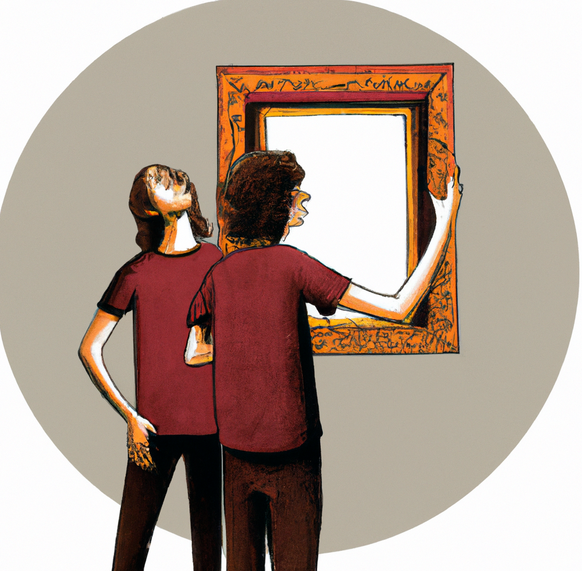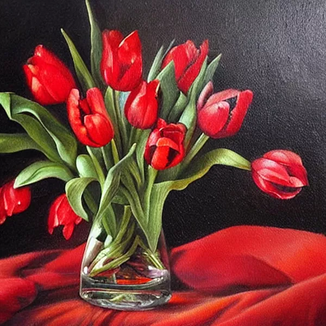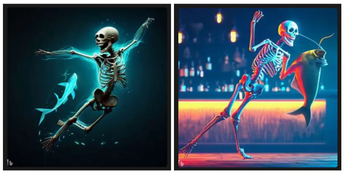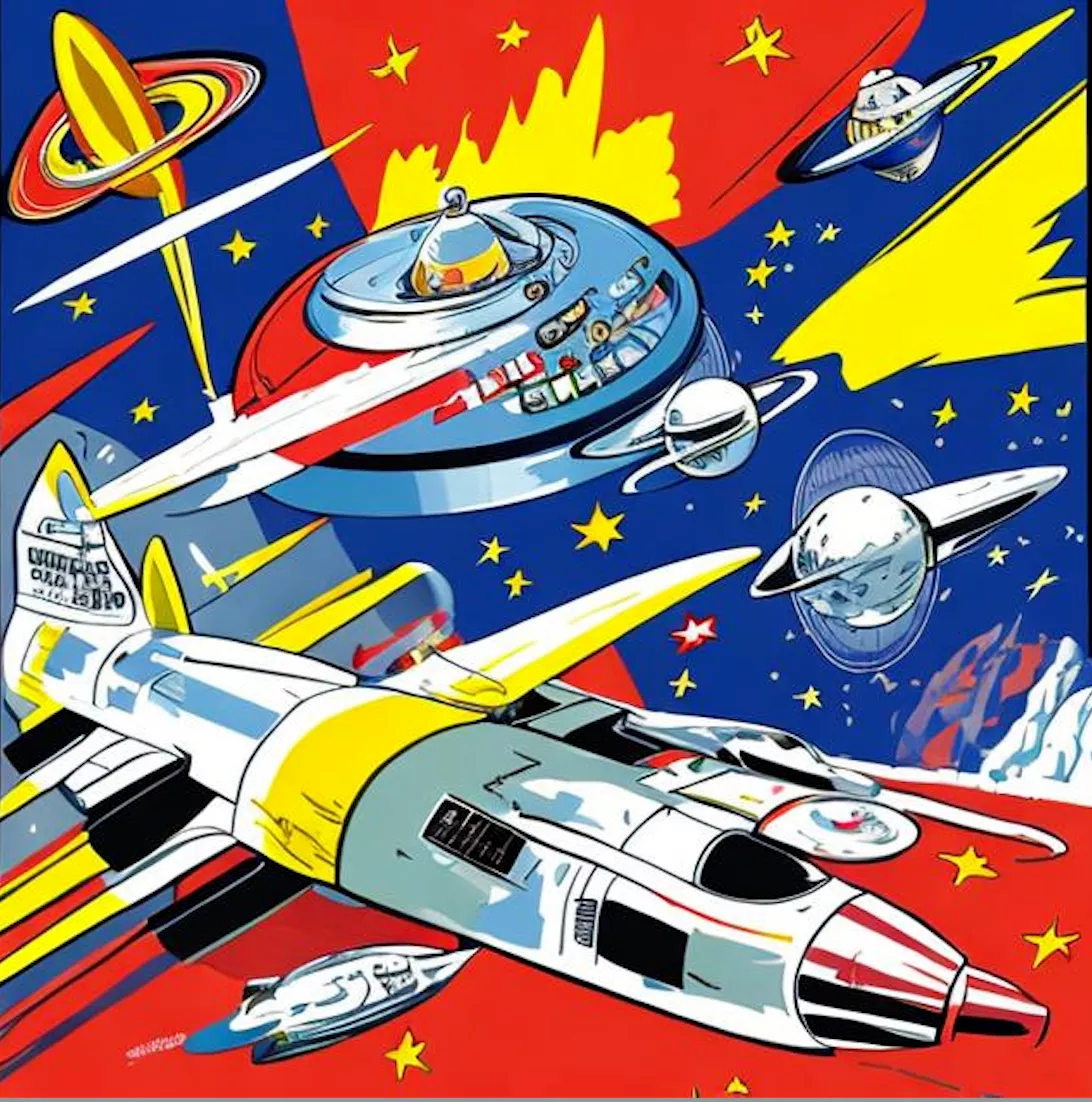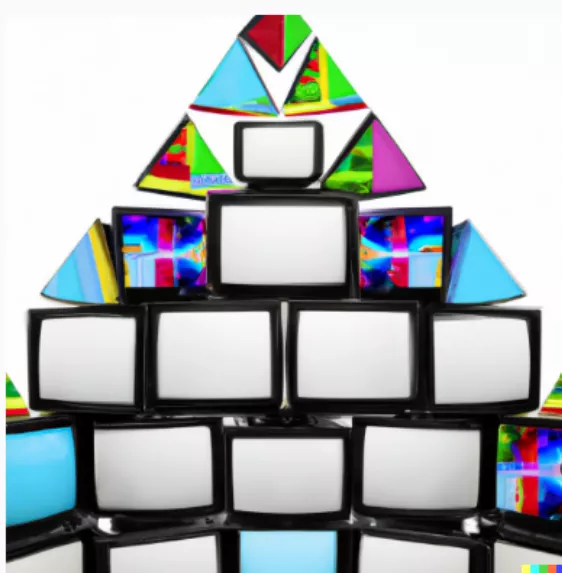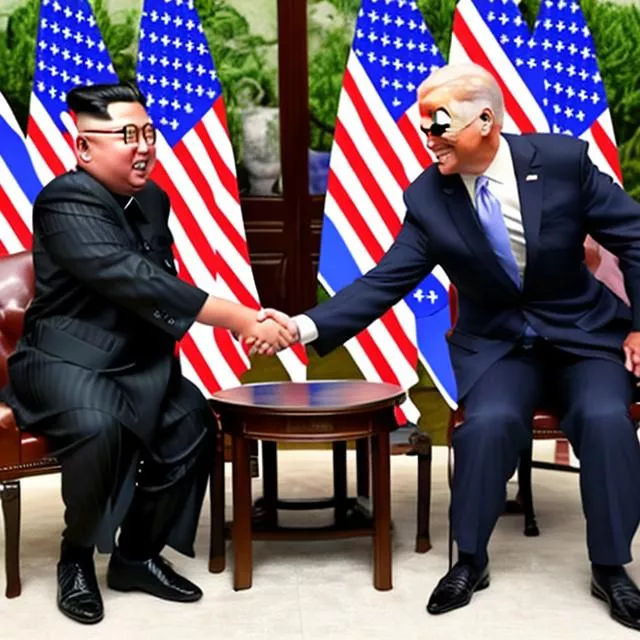Framing AI Images
"Framing AI Images" DALL-E Generated 9/17/23
Overview:
Generative AI is well positioned to play a significant role in the future of human thought, work, and creative expression. It also presents unique challenges and threats in each of these areas that, when exposed, can strike at the very nature of what it means to be human. These conditions create a need for educational exercises that require both engagement with and critical reflection on AI processes, so that students can experience the potential and limitations of generative AI both on their own terms and as part of a cohort of engaged learners tasked with identifying best use practices. The following discussion pertains to a sequence of writing activities for early undergraduates designed to spark interest in the evolving relationship between images and language, and an individual's ability to generate one with the other through technological assistance. The multimodal nature of this activity provides a visual medium for thinking about the constructed and mediated nature of AI content and authorship while asking for written outcomes.[1] There’s an immediate need for an acquisition of this sort of critical framework, as students suddenly find themselves part of the first generation of scholars with near instantaneous access to these powerful new tools. Evidence drawn from student work included below is used to advance discussion on several key topics related to the assignment. You can view a full account of student free writing here.[2]
Assignment:
Ask students to create an image using an original phrase or brief set of phrases as a text prompt, and a free generative AI platform of their choice. Encourage them to take some time to experiment with the different features and permutations of 'prompt language' before settling on an image. Once they settle on an image, have them save or screenshot and upload it to a new document. For the writing assignment, ask them: “In several sentences, describe the image. What do you notice? What is surprising or unexpected? How do the recorded results compare with what you were thinking before generating the image? What, if anything, does the image say about the AI you used to create it or what contexts or sources the AI may have drawn from? To what degree do you think the image is authentic, and why?” These questions, while flexible, are meant to help students gain a more critical understanding and appreciation of the nature of the source generated from their initial text prompt, in part by using primary source analysis tools endorsed by the Library of Congress and in part developed to encourage theorization around issues of authorship. Encourage students to share their work and findings together! A great reflective activity to follow up with in class is to ask students about why they think the exercise took them from a small amount of writing (the text prompt) to a much larger piece of writing (their response.)
Fostering AI Literacy Through Creative Discovery:
As educators grapple with the promise and perils of AI in and beyond the classroom, one intention of this assignment is to direct students towards an AI utilization strategy in which machine generated content is used to help them build outward from their own ideas, beginning with their own originating concept for the image. This strategy embodies a pedagogical approach in which AI content is viewed not as an end-product, but as a valuable yet problematic starting-point. At UC Berkeley, undergraduate Discovery is described as "a journey of engaged creativity and self-actualization" that "foregrounds experiential learning as a doorway to educational purpose and community building." Discovery practices aim to push knowledge building beyond didactic exchanges, and in this case encourage students to foster their own relational understanding with the tools that stand to redefine the nature of thinking and writing. For this project, students did not simply write about a source or issue, but 'created' their own image and process to investigate. With this in mind, student responses to the assignment offer a range of insight into the mediating role that AI plays in content creation. Some suggest novel takes on the errors, imperfections, or discrepancies/distance between intended outcomes and actual results. Others venture into issues like the nature of expression and the powerful danger of misinformation. This variety of responses is significant if for no other reason than its demonstration of how opinions exist in diversities, diversities which are foundational to educational communities, and which AI notoriously flatten and distort.
|
Prompt: Red tulips in an adorned vase. The atmosphere is gloomy "The reason why I chose red tulips was because they hold sentimental value to me and I was hoping that my emotions could be reflected in the painting. However, I think the AI failed to do this. When I look at the image, I don't feel some sort of connection even though red tulips themselves are something I connect to. I think the AI fails to be authentic because it doesn't carry the experiences that I have. Authenticity in art to me means a piece that carries the emotions of the artist and the things they have health with. The AI only carries a prompt but it will never be able to convey the real feelings of someone." |
|
Prompt: Everything happens for a reason, life is for discovering not knowing "It is surprising that AI was able to create art that could accurately be interpreted as the key words I entered. I know that this was the purpose but I am just shocked that it didnt just show images of the key words and instead made a story. With this in mind it created something unique and original through its own interpretation."
|
|
Prompt: A Japanese craftsman making Momotaro denim jeans "As far as the authenticity of this image, I don’t think it’s authentic. It’s not an actual picture of a real craftsman making jeans but rather an imitation based on the information that the internet could provide. Even when comparing it to artwork such as paintings and drawings, where artists don’t necessarily paint a real scene and use the information they’ve collected about the subject, it doesn’t have the decision-making process that artists do."
|
|
Prompt: University of California Berkeley Wheeler Hall "I started out with about the most simple prompt you could compose for the algorithm to interpret, “University of California Berkeley Campus''. The results were anything but Berkeley... Submitting the prompt a second time resulted in a nearly identical image. Perhaps this was the platform's feeble attempt at depicting Wheeler Hall? Doe? The one thing these generated buildings have in common are their greco-roman columns." |
|
Prompt: An energetic human skeleton dancing with a fish "Although AI is combining and learning from other artworks, it’s exactly the same as how humans create art. The essence of art is the collision and combination of different ideas and inventions, which is what AI is doing, although in a way some people do not accept it... Moreover, the images made by AI really surprised me, which both satisfied my expectations and also showed some creativity that is beyond my imagination." |
Recursive Development, Rhetorical Strategies, and Project Based Learning:
Opinions formed through informal discovery writing like those highlighted above can become points of departure for sophisticated critical inquiry through a 'return and revise' type strategy for idea building. This strategy would look familiar within the field of composition studies even before the AI turn, but it is also instructive in demonstrating the nature of critical thinking as fundamentally novel in comparison to AI generated content. Simply put, returning to a drafted idea with new questions and with the intention to reconsider, develop, and innovate is how experienced writers develop meaningful writing.[3] However, requesting a text or image generator to provide elaboration or draw conclusions from any given text, let alone a uniquely generated visual 'text' like those created for this project, is often the most expedient way to expose the limitations of its ability to produce valuable or accurate content.[4]
Importantly, embedding both peer and instructor intervention between stages of recursive development supports the values of collaborative learning, establishes a less hierarchical model for providing instructive feedback, and creates opportunities for casual and incremental assessment. This promotes greater accountability in student writing by making the steps towards the final product both visible and vital, making AI plagiarism of final products more difficult and less relevant. It also helps students learn and think more effectively. For example, responses for this assignment, shared online and in classroom breakout groups, became the basis for further class conversations and controlled opportunities for students to rehearse and debate their ideas. Beyond this, students were provided options to continue their work through guided investigations devised around their initial creation and reflection in further stages of the project.
For example, in an optional second part to this assignment, students were asked draw upon their image and response to develop an argumentative essay. (To help inform their perspectives, they were encouraged refer to or respond directly to things like notes generated from class discussions, one of several popular articles on AI, and Denis Dutton’s scholarly work Authenticity in Art, abridged from the Oxford Handbook of Aesthetics.) In keeping with the strategy of recursive development, these essays were progressively revised throughout the semester, with several examples included below. By relying on an iterative, project-based model for introducing academic writing processes, one that starting with low-stakes writing and encourages students to determine the content and direction of their assignments, students become invested in their work, and develop it in a way that readies them for the kind of rigorous and authentic scholarship that will be increasingly valuable in a world of machine generated content.
Importantly, embedding both peer and instructor intervention between stages of recursive development supports the values of collaborative learning, establishes a less hierarchical model for providing instructive feedback, and creates opportunities for casual and incremental assessment. This promotes greater accountability in student writing by making the steps towards the final product both visible and vital, making AI plagiarism of final products more difficult and less relevant. It also helps students learn and think more effectively. For example, responses for this assignment, shared online and in classroom breakout groups, became the basis for further class conversations and controlled opportunities for students to rehearse and debate their ideas. Beyond this, students were provided options to continue their work through guided investigations devised around their initial creation and reflection in further stages of the project.
For example, in an optional second part to this assignment, students were asked draw upon their image and response to develop an argumentative essay. (To help inform their perspectives, they were encouraged refer to or respond directly to things like notes generated from class discussions, one of several popular articles on AI, and Denis Dutton’s scholarly work Authenticity in Art, abridged from the Oxford Handbook of Aesthetics.) In keeping with the strategy of recursive development, these essays were progressively revised throughout the semester, with several examples included below. By relying on an iterative, project-based model for introducing academic writing processes, one that starting with low-stakes writing and encourages students to determine the content and direction of their assignments, students become invested in their work, and develop it in a way that readies them for the kind of rigorous and authentic scholarship that will be increasingly valuable in a world of machine generated content.
Sample Argumentative Essays (click the images)
[1] In this way, the project aims to create what Patricia Dunn in Talking, Sketching, Moving: Multiple Literacies for Composition (2001) describes as “the metacognative distance all writers need -on a draft, on an idea, on their thinking [which] can come through visual, aural, spatial, emotional, kinesthetic, or social ways of knowing.” It aligns with a precedent and rationale for multimodality in composition training in the computer age that goes back at least as far as the 1970s, a history outlined and carefully preserved by Jason Palmeri in Remixing Composition: A History of Multimodal Pedagogy (2012).
[2] All student content is included anonymously and with permission.
[3] See Nancy Sommers, Revision Strategies of Student Writers and Experienced Adult Writers (1980).
[4] For context on the limitations of AI in replicating human thought, see Noam Chomsky's New York Times Opinion article, "The False Promise of ChatGPT" (3/8/23).
[2] All student content is included anonymously and with permission.
[3] See Nancy Sommers, Revision Strategies of Student Writers and Experienced Adult Writers (1980).
[4] For context on the limitations of AI in replicating human thought, see Noam Chomsky's New York Times Opinion article, "The False Promise of ChatGPT" (3/8/23).
